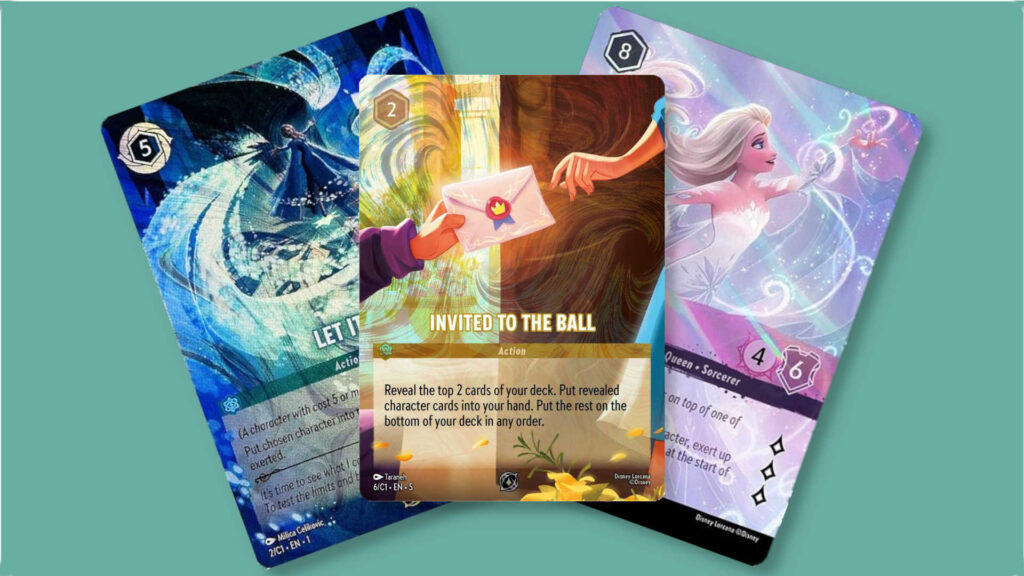Almost exactly 40 years ago, a low budget sci-fi action film put director James Cameron on the map, as his first step on the road to the ridiculously successful, blockbuster movie maker that he’s been ever since (and yes, we know that Piranha II: Flying Killers was his first movie as director, but we’re going to conveniently forget that one, as we’re sure Cameron himself does too!). The Terminator became a massively successful and influential film, not only ensuring Cameron’s future as one of the most successful creators of hugely popular event movies, but also further solidifying its star, Arnold Schwarzenegger, as one of the most bankable names in ’80s cinema. The Terminator became an era-defining and hugely influential movie that, somewhat appropriately, helped to shape the future of cinema itself.
Table of Contents
ToggleA Brief History of The Terminator CCG
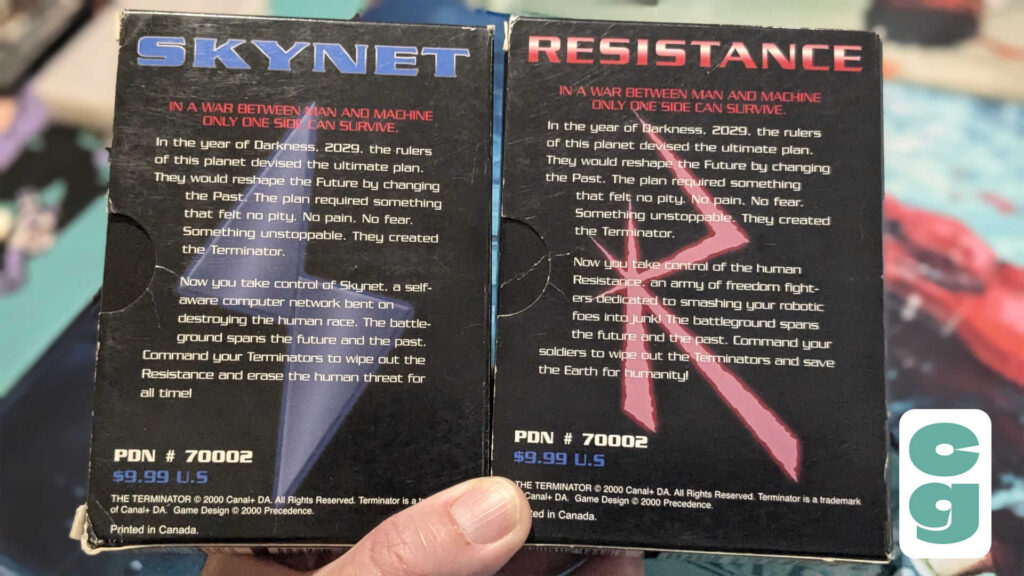
Almost a decade after The Terminator‘s 1984 release, with Magic: The Gathering’s launch in 1993, collectible card games (or CCGs) had shaken their own industry up, and began to alter the future of tabletop gaming forever. This occurred shortly after The Terminator‘s massively successful, truly groundbreaking sequel, Terminator 2: Judgment Day. However, it took until 2000 for a company to create a CCG based on the Terminator franchise, and it was an admirable, if doomed, attempt to adapt the first film into an expandable, even multiplayer, card game experience.
Precedence Publishing had created some genuinely excellent collectible card games by the year 2000, though they weren’t always the big sellers they’d hoped for, and as such were more short-lived than they deserved. Titles such as the Aliens/Predator CCG and Babylon 5 CCG (both released in 1997) and 1999’s Tomb Raider CCG are all still fondly remembered by gamers who got to experience them at the time of release.
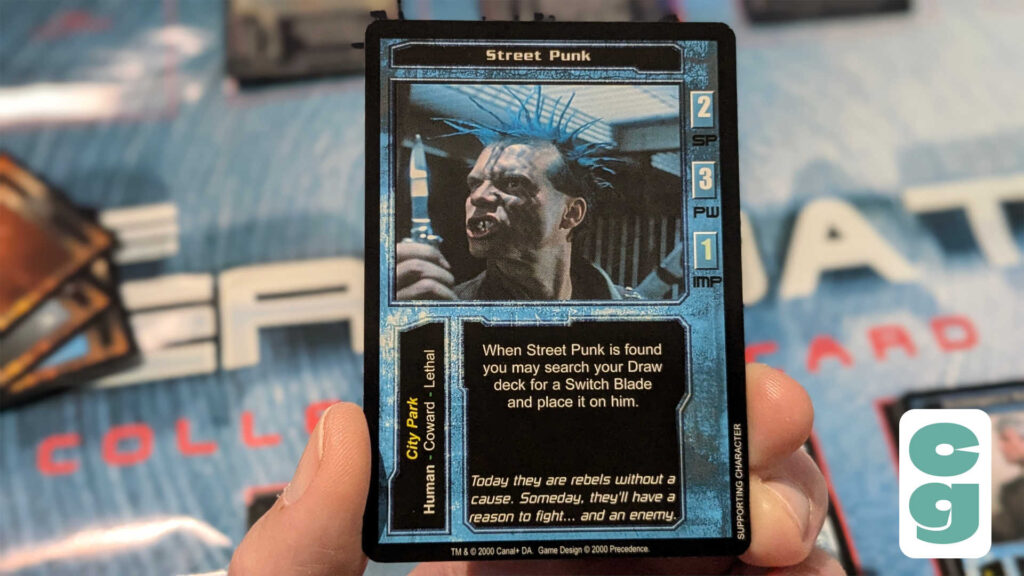
Precedence released The Terminator CCG in 2000, using the Battleground System which also formed the basis of the Aliens/Predator CCG. This also, brilliantly, made the games cross compatible, allowing players to pit Terminators against Aliens and Predators, and even Michael Biehn vs Michael Biehn, seeing as he played Kyle Reese in The Terminator, and Cpl. Hicks in Aliens. Famously the only actor to have been killed by a Terminator, an Alien, and a Predator onscreen, Bill Paxton appears as Street Punk (shown above) in The Terminator CCG and Pvt. Hudson in the Aliens/Predator CCG, but his Predator 2 character, Jerry Lambert, doesn’t appear in the game.
The Battleground System itself was solid and made for some really cool gameplay elements, such as building a “map” of location cards up on your side of the play area, with characters moving between locations, and even being able to cross over to your opponent’s side if they played a location with the same name as yours. Victory and game setup depended on the scenario being played, but generally a certain number of mission points earned, or a specified number of “importance” points gathered from terminating characters, would secure a win.
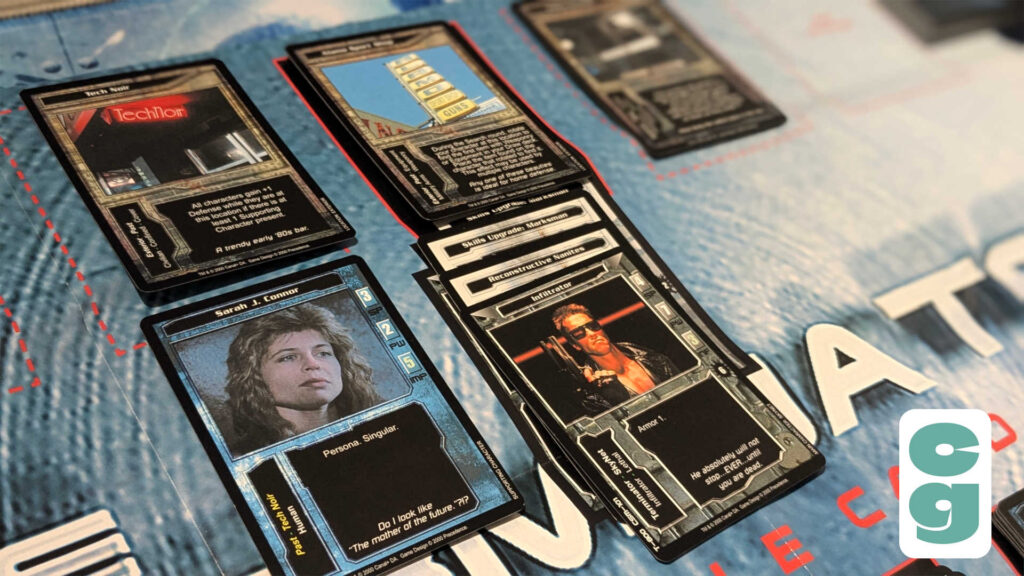
The game was designed to support teams of Skynet players vs Resistance players, with its Future Wars rules, and even had locations in different time periods, with past and future location decks to be built depending on which era the session was taking place in. The asymmetrical nature of gameplay, with Skynet vs Resistance, led to some real variety in the experience depending on which side you chose; the Skynet player was built with devastating power and resilience, whereas the Resistance had to be a bit smarter with their moves and selective with their combat.
What Went Wrong With The Terminator CCG?
If all of this sounds really promising, that’s because it was; however, numerous issues prevented The Terminator CCG from progressing past its initial set of cards. It’s worth noting that The Terminator‘s movie rights were, seemingly, a bit of a mess at the time of the game’s release, and they were separate from Judgment Day‘s. As such, The Terminator CCG could only cover the first film. Making things even more difficult was the fact that Arnold Schwarzenegger was (at the time) notoriously strict on his likeness being used, and Precedence were unable to secure the rights to use images of Schwarzenegger in the game, beyond the image which appeared on the movie poster for The Terminator, which were somehow owned by the film company and not the actor himself.
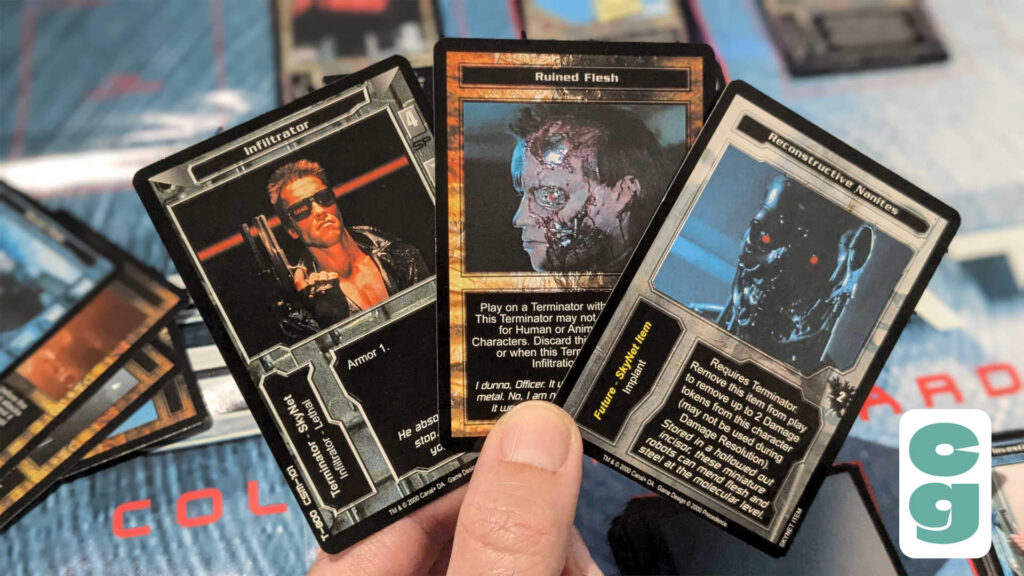
Though, alongside that single poster image, you’ll find photos of the Terminator endoskeleton in the game, and a few shots of a latex-based puppet of Schwarzenegger (used for a few shots in the film), there’s a distinct lack of the actual T-101 model himself, which is a pretty big problem for a game called, and based on, The Terminator.

As you can see from the above card, Precedence went to almost comical lengths to ensure they’re not using Schwarzenegger’s likeness; the weird cropping of the image above means that you don’t see his face, even though it’s him firing his Uzi in Tech Noir!
Even setting aside the deliberate omission of Schwarzenegger’s likeness in all card images, Precedence‘s card design style in general, of using mostly blurry still images taken from the film (alongside very dated computer generated images), was starting to feel a little long in the tooth by the time of the game’s release, and it also didn’t help that The Terminator CCG was poorly distributed; outside the US, for example, it wasn’t easy to get hold of the game’s starter decks or boosters.
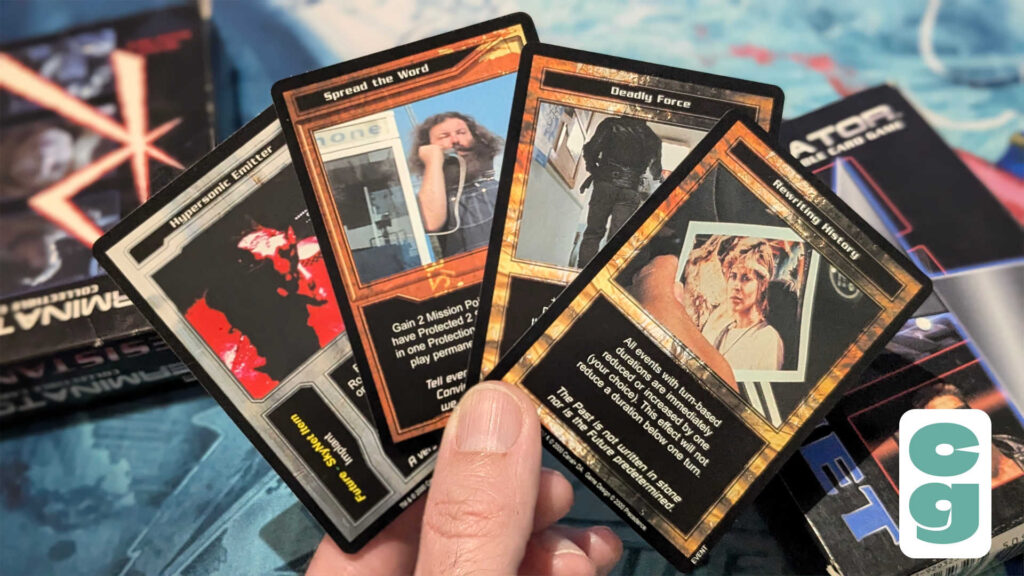
It would have been a no-brainer for a future set for The Terminator CCG to shift focus to Terminator 2, but of course with Schwarzenegger’s increased role and face turn in the sequel, it would have likely made it even more difficult to create cards based on the second film. With even the most minor moments and shots having been incorporated into the first set, little room was left for another set within the first film’s material. Of course, Precedence could have made the shift to original artwork, stories, and characters; however, this was something they didn’t seem willing, or able, to do.
So unfortunately, there’s only one set of The Terminator CCG; two distinct, asymmetrical starter decks (Skynet and Resistance), and booster packs of nine cards each.
Is The Terminator CCG Fun to Play?
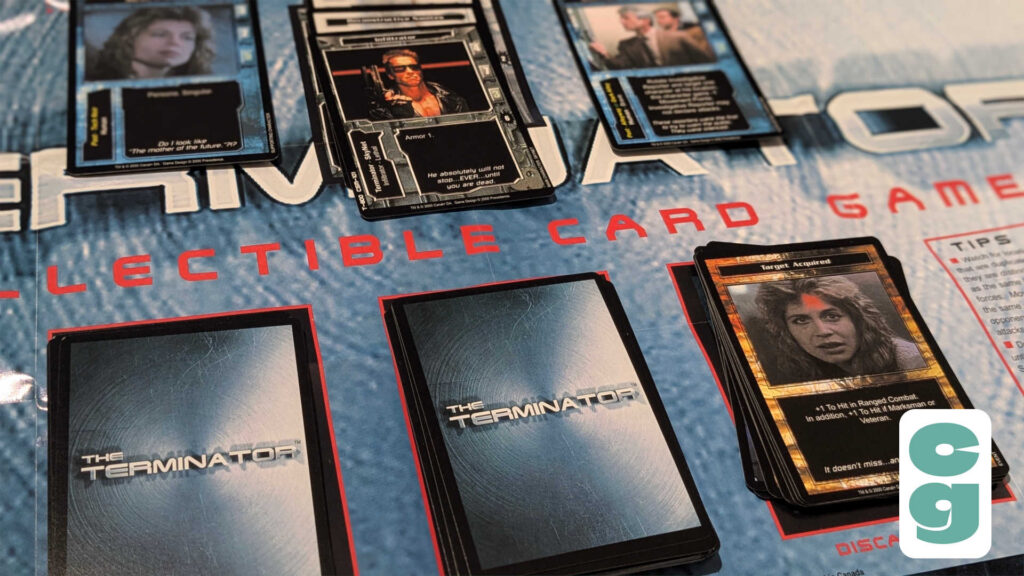
As mentioned above, there’s a lot of really cool ideas and mechanics in The Terminator CCG, which uses an already established framework: the Battleground System. If you manage to find the two starter decks, they do offer a pretty good, self-contained experience; however, do be warned that it does stick very closely to the feel of the original film, in that it’s very difficult for the Resistance player to succeed against the very powerful Skynet side, with the Infiltrator unit (the sole card which features Arnold Schwarzenegger himself) being particularly troublesome to deal with.
It makes for a pretty tense experience, and the way that characters can move around a steadily built up map of locations is genius. There’s some odd design choices, however. For example, one of the victory conditions is killing 10 Importance points-worth of characters. Why, then, is Sarah J. Connor, the target of the Terminator itself in 1984, only worth five Importance points? Surely, once she’s killed, it should be game over for both sides? It’s also the case that some cards are too location-specific, and the luck of the draw across two decks (the location deck and the general draw deck) can be an issue.
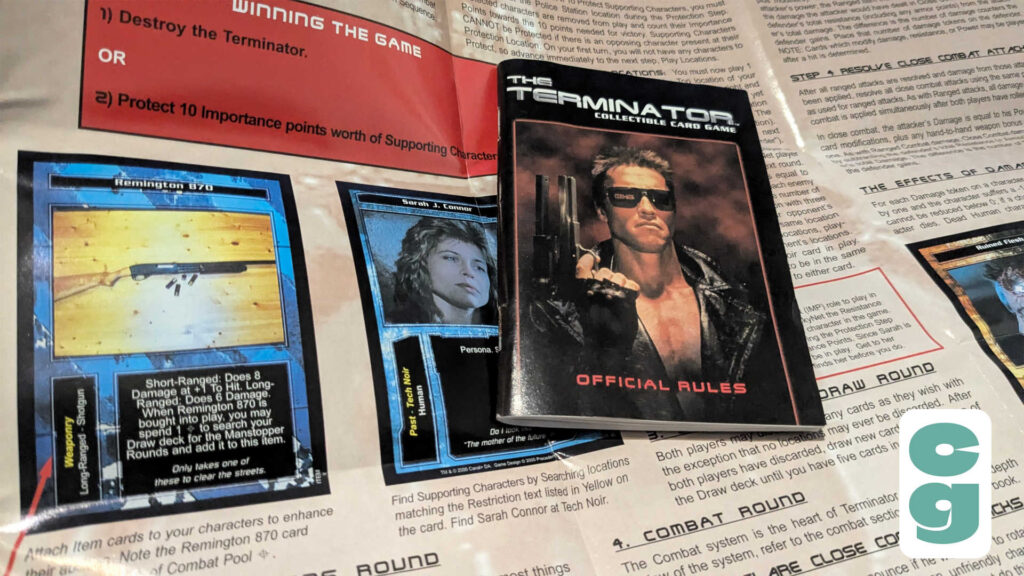
There’s also the matter of the rulebook being incredibly dense and poorly organized; as each game’s setup differs, depending on the scenario players will be using, the rules for hand sizes, starting cards, and locations are all right at the back of the book, lots of rules are skipped over, badly explained, and only clarified in the glossary. In short, even with the guidance on the playmats (which still needs players to look up some concepts in the rule book), the game is really tough to learn.
However, elements such as combat are nicely handled, and movement, with neat touches such as being able to move as squads to prevent being outnumbered, is also well done.
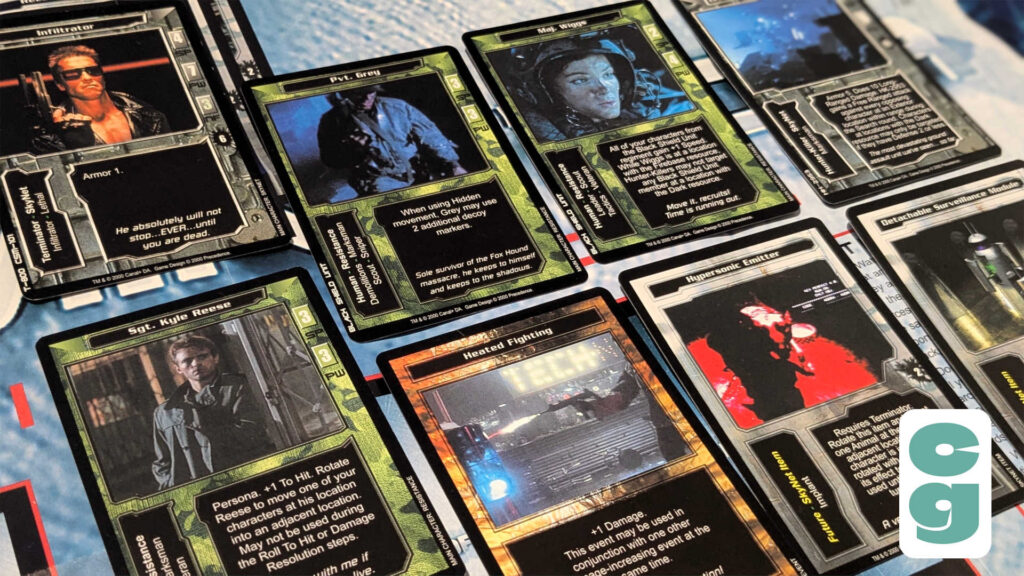
If you can get over the initial hurdle of learning to play, if you’re a fan of The Terminator you should enjoy The Terminator CCG. The starters do provide a reasonable experience that feels highly thematic to the film, but the game really comes alive when both players have access to a wider card pool, which can definitely balance the game a lot better. It’s harder these days to build two opposing decks set in the future, given that the starters are based in the past and you’ll be reliant on whatever boosters or single cards you can find, but this is another excellent aspect of the game. Though it’s unlikely now, the option to play with multiple teammates and opponents is another element that makes The Terminator CCG stand apart from its peers.
Other games based on the Terminator franchise have come and gone over the years, but The Terminator CCG remains one of the most interesting, and perhaps the only one (at least in its initial, 1v1 scenario) that’s recreated the horror-adjacent, tense atmosphere of the first film. Though it couldn’t quite find a big enough playerbase, and other issues prevented it from being considered a truly excellent CCG, The Terminator CCG‘s two starter decks (which, if you’re lucky enough to find a sealed one, also come packaged with a booster pack) are cheap enough to pick up that they’re worth a look, so fans can stop, or kick into motion, Skynet’s plans for themselves.
Want to check out other interesting, out-of-print games? Take a look at our feature on the fantastic Street Fighter: The Deck-Building Game, or the underrated ’90s title, Sim City: The Card Game, based on the classic video game series.





